If you’re looking for a fun and creative way to add some pizzazz to your RV, consider investing in skirting. Skirting is an inexpensive way to give the exterior of your RV a unique look and feel. From classic colors to modern patterns, there are countless options available on the market today, so you can find something that matches your style and budget. Whether you’re aiming for an eye-catching design or just want to use skirting as a practical means of keeping dust and dirt out of cracks and crevices, these creative RV skirting ideas are sure to help bring your vision to life.
Table of Contents
Types of RV Underbelly Insulation
When it comes to RV underbelly insulation, there are several different types that one can choose from. These include:
Polystyrene Foam Board Insulation: This type of insulation is light and easy to install. It offers strong thermal resistance and helps to keep the RV warm in cold climates. The downside is that it does not provide any soundproofing or water resistance.
Expanded Polypropylene (EPP) Insulation: EPP has a higher R-value than polystyrene foam board and also provides better soundproofing properties due to its multiple layers. However, like the previous type, it does not offer any water protection.
Reflective Bubble Wrap Inserts: This type of insulation is more lightweight than the others and provides good thermal resistance, soundproofing, and water protection. However, it needs to be replaced regularly as its reflective coating may become damaged over time.
No matter which option you choose for your RV underbelly insulation, make sure to consult a professional before beginning any installation work. An experienced technician will be able to recommend the best product for your particular situation and ensure it is installed correctly for maximum efficiency.
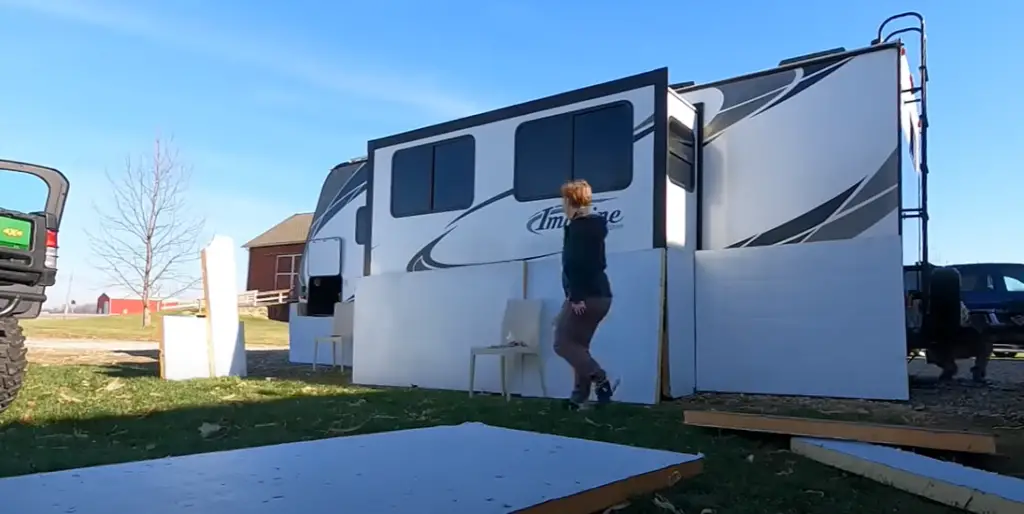
How to Install Permanent RV Underbelly Insulation
Installing RV Underbelly Insulation is a great way to keep the interior of an RV comfortable while helping reduce energy consumption. Before installing your insulation, you’ll want to ensure that your underbelly is clean and free from any debris or dirt. This will help create a better seal for the insulation.
- Measure the area where you will be placing the insulation and cut out pieces of material accordingly. Make sure to measure twice before beginning the cutting process!
- Place each piece of material into position starting at one end and working towards the other until all pieces are in place. It’s important to make sure that each piece fits firmly without any gaps between them or overlapping edges.
- Secure the insulation in place using a combination of glue and screws. This will ensure that it stays in place when exposed to weather elements.
- To complete the installation process, seal any remaining gaps with either foam caulking or expanding foam. This will provide an extra layer of protection as well as help reduce air leakage from the RV’s underbelly.
With these steps you can easily install permanent RV Underbelly Insulation for improved comfort and energy efficiency for your RV! If you have questions about installation, be sure to consult with a professional before beginning the project.
What is RV Skirting and Does it Work?
RV skirting is a material that goes around the base of your recreational vehicle (RV) to protect it from the elements. The material usually consists of lightweight vinyl or polyester that can be easily cut and shaped to fit around any RV. It creates an effective barrier against rain, snow, wind, insects, rodents, and other animals. Additionally, RV skirting helps keep your RV warmer in cold temperatures by trapping heat inside its walls and preventing cold air from entering. This can help reduce energy costs associated with heating an RV during colder months.
The effectiveness of RV skirting will depend on several factors such as the quality of the material used, how well it’s installed, and how much insulation it provides. Generally, RV skirting is an effective way to protect your RV from the elements and can help reduce energy costs associated with heating your RV in cold temperatures. However, it’s important to make sure that the material you use is of high quality and properly installed for maximum protection. Additionally, if you live in areas that experience extreme weather conditions such as high winds or heavy snowfall, it may be necessary to reinforce or supplement your RV skirting with additional materials.
It’s also important to note that some campgrounds have specific rules regarding the use of RV skirting on their property. Before installing any type of skirting around your RV, make sure you are familiar with any local regulations or requirements. Additionally, always follow manufacturer instructions and use caution when installing skirting around your RV.
In summary, RV skirting is an effective way to protect your recreational vehicle from the elements and can help reduce energy costs associated with heating it during colder months. With proper installation and quality materials, RV skirting can provide a reliable barrier against rain, snow, wind, insects, rodents and other animals. Be sure to check local regulations before installing any type of RV skirting on campground property and always follow manufacturer instructions for safety [2].
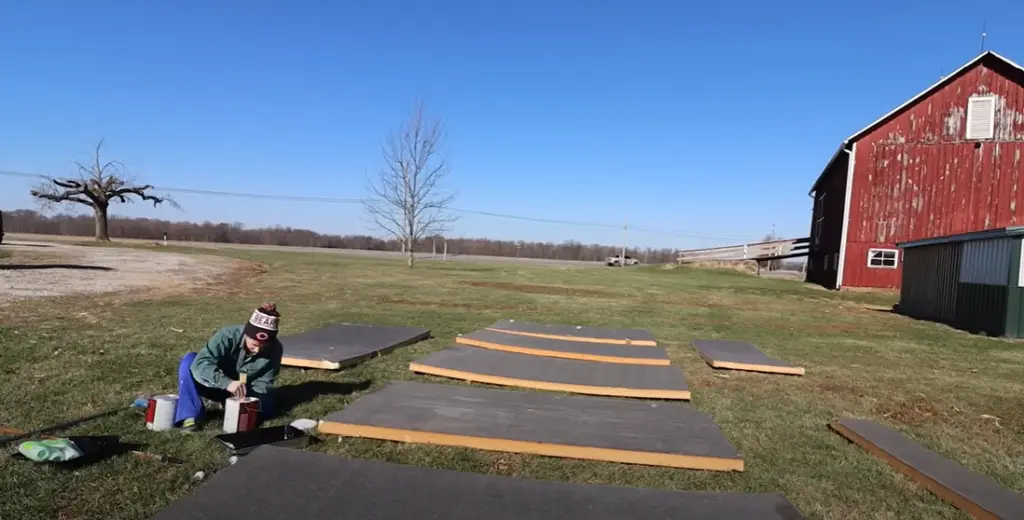
Types of RV Skirting Materials
Vinyl RV Skirting
Vinyl RV skirting is one of the most popular materials used to skirt an RV. It is durable, easy to install, and relatively inexpensive compared to other materials. Vinyl skirting provides excellent insulation and protection from the elements. The color selection available in vinyl makes it a great choice for those who want to customize their RV’s appearance.
Metal RV Skirting
Metal skirting offers more protection than vinyl but can be slightly more expensive depending on the type of metal chosen. Metal will keep heat in better than vinyl so it’s a good option for those living in areas with colder climates or wanting to use less energy heating their RV. It also lasts longer than vinyl and doesn’t require much maintenance over time.
Fiberglass RV Skirting
Fiberglass skirting is a great option for those looking for something lightweight and durable. It’s more expensive than vinyl or metal but it’s also stronger and lasts longer. Fiberglass skirting is good at keeping out pests, wind, rain, and other elements so it’s a great choice if you live in an area with extreme weather.
Plywood RV Skirting
Plywood skirting is a sturdy option that offers good insulation and protection from the elements. It’s not as lightweight as fiberglass or vinyl, but it is strong and durable. Plywood is also relatively inexpensive compared to other materials making it an affordable choice for those on a budget. However, plywood requires more maintenance than the other materials so make sure you factor that into your decision when choosing the best material for RV skirting.
Foam Board RV Skirting
Foam board skirting is a great option for those looking for an inexpensive material with good insulation properties. It’s lightweight and easy to install, but it doesn’t offer as much protection from the elements as other materials like vinyl or metal. Foam board is also not as durable as other materials so make sure you consider this when making your decision.
Straw/Hay Bales RV Skirting
Straw and hay bales are great for those looking for an inexpensive and natural option. They provide good insulation and are a renewable resource, but they don’t offer as much protection from the elements as other materials. Straw and hay bales need to be replaced more often than other materials so make sure you factor this into your decision when choosing the best material for skirting your RV.
Stone/Rock RV Skirting
Stone or rock skirting is a great choice for those who want something durable with excellent insulation properties. It’s also fairly expensive but it offers good protection from the elements and doesn’t require much maintenance over time. Stone or rock will add a unique look to your RV and can be a great way to customize its appearance [3].
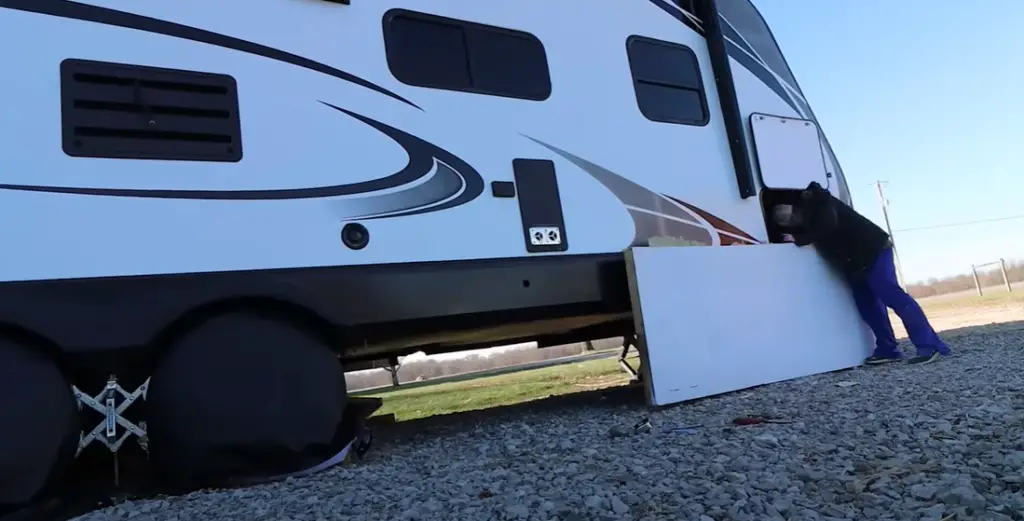
RV Skirting Solutions
Custom RV Skirting
A custom RV skirting solution is the perfect way to protect your RV from extreme temperatures and weather conditions. The skirting is designed to fit any shape and size of RV, creating a custom tight seal that prevents air infiltration while providing insulation against cold winter winds or hot summer sun.
RV AirSkirts
RV AirSkirts is a unique product specifically designed to provide the best possible RV skirting solution. The patent-pending construction of the skirt panels features built-in air baffles that facilitate a continuous, uniform seal around your RV. This ensures maximum insulation and protection from extreme temperatures and weather conditions. In addition, the adjustable tension system allows you to adjust the skirt snugly for increased security and durability.
EZ Snap RV Skirting System
EZ Snap RV Skirting is a revolutionary RV skirting system that offers the ultimate in convenience and installation. EZ Snap’s patented snaps attach directly to your RV’s wall, eliminating the need for screws or bolts. Simply snap the individual panels together and you have a custom fit skirting solution that provides increased insulation and protection from extreme temperatures and weather conditions. The lightweight construction also makes it easy to store when not in use.
RV WindSkirt
The RV WindSkirt is a custom fit skirting solution designed to provide maximum protection against extreme wind and weather. The solid construction of the panels provides increased insulation and durability while the adjustable tension system ensures a snug, secure fit against your RV wall. The lightweight, low profile design also makes it easy to store when not in use.
DIY RV Skirting
If you’re looking for an easy and economical way to create a custom fit skirting solution for your RV, then DIY RV Skirting is the perfect option. This do-it-yourself kit includes everything you need to create a custom fit skirting that provides maximum insulation and protection from extreme temperatures and weather conditions. The lightweight construction also makes it easy to store when not in use.
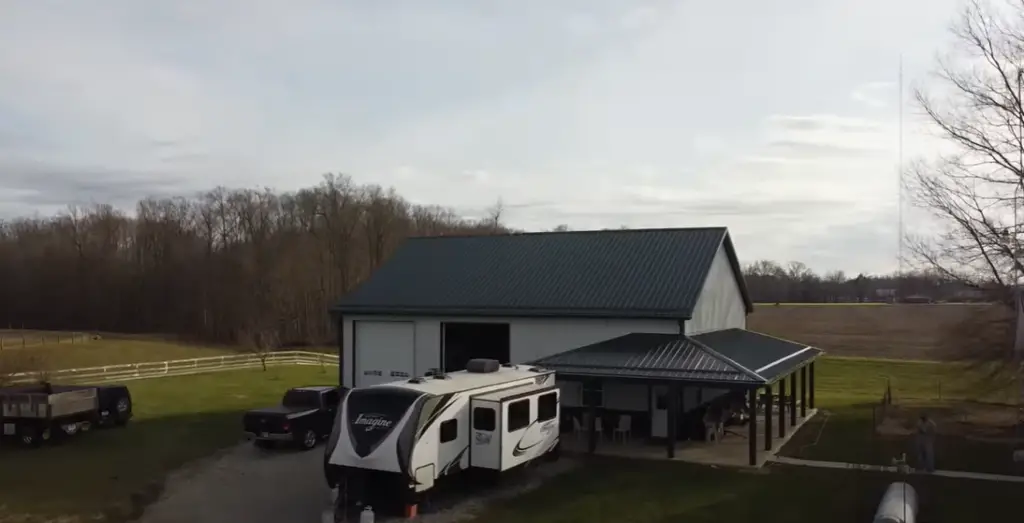
How much does it cost to skirt an RV?
The cost of skirting an RV can vary greatly depending on the size, type, and condition of your RV. There are also different types of materials that can be used to skirt your RV such as vinyl, wood, or aluminum. Generally speaking, you should expect to spend between $500-$2,000 for a complete job. The cost may be higher if you choose custom materials or hire a professional to install the skirting for you. Additionally, some campgrounds may require additional fees for the installation and maintenance of skirting around RVs. Be sure to check with your campground before starting any work on your RV skirting.
Once installed properly, RV skirting provides several benefits like improved insulation and protection from animals or debris. Skirting can also make your RV look more attractive and help to create a more comfortable living space outdoors. Installing skirting around your RV is an excellent way to add value, convenience, and extra protection for your recreational investment.
How to maintain a RV skirting?
Maintaining your RV skirting can help ensure that it lasts for many years. Here are some tips to keep your RV skirting in top condition:
- Clean the skirting regularly: Dirt and dust can accumulate on the surface of the skirting, so it’s important to remove any debris with a damp cloth or vacuum. You should also be sure to periodically check for tears, holes, or other damage that could allow moisture or pests into your RV.
- Inspect the seals: Make sure all seals around windows, doors, vents, and other openings are secure and free of cracks or damage. If you notice any issues with the sealant around these areas, consider resealing them as soon as possible.
- Repair any damage: If you find any holes, tears, or other damage in the skirting material, repair them as soon as possible. This can help prevent pests from getting into your RV, and also helps maintain the insulation properties of the skirting.
- Apply a waterproof coating: To protect your RV skirting from water damage, consider applying a waterproof sealant to the surface of the material. You can purchase specialized products designed for this purpose at most home improvement stores.
- Store away when not in use: When your RV is parked for long periods of time, it’s important to make sure that the skirting is properly stored away. This prevents it from becoming dirty or damaged by weather or other elements.
By following these tips, you can help keep your RV skirting in top condition and ensure that it lasts for many years to come.
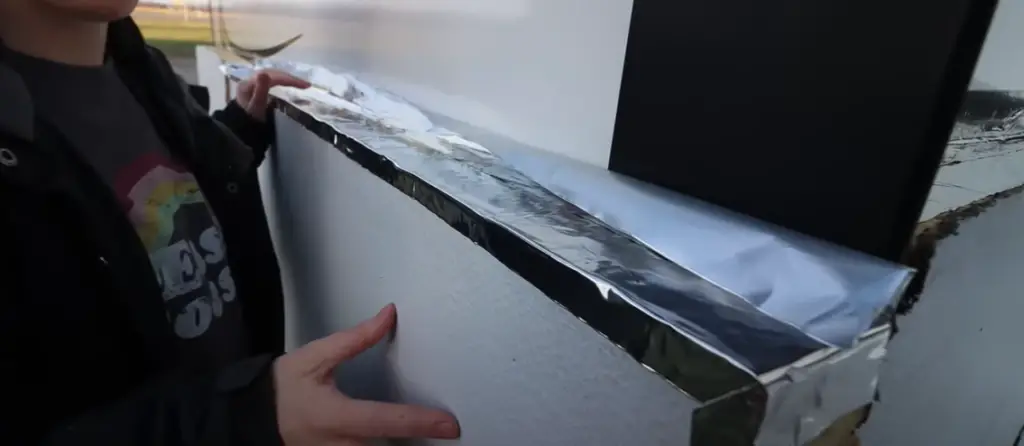
FAQ
What can I use instead of RV skirting?
There are several alternatives to RV skirting that can be used. These include foam insulation, canvas tarps, frost free water hoses, and heated mats. Foam insulation is an effective way to keep the heat in your RV during cold weather. It’s easy to install and can be customized for any size RV.
Canvas tarps offer a more affordable option than skirting as they can also provide protection from the elements while allowing air circulation. Frost free water hoses allow you to keep your RV plumbed in all winter without having to worry about freezing temperatures damaging them. Heated mats are a good option for keeping floors warm in cold temperatures and come in various sizes to fit most RVs.
Each of these options has its own advantages and disadvantages, so it’s important to consider your specific needs before deciding which one is best for you.
What is the cheapest way to skirt a camper?
The cheapest way to skirt a camper is usually with canvas tarps. Canvas tarps are lightweight and affordable, and they provide some protection from the elements while allowing air circulation. They can be attached to your RV using bungee cords or other securing methods and should be removed when spring arrives to prevent molding or mildew buildup. Frost free water hoses are also an inexpensive option as they allow you to keep your RV plumbed in all winter without worrying about freezing temperatures damaging them.
Heated mats are another economical choice for keeping floors warm in cold temperatures. These come in various sizes to fit most RVs and provide insulation against the cold. Ultimately, it’s important to consider what works best for your particular needs before making a decision.
What is the best way to insulate my RV?
The best way to insulate an RV is with foam insulation. Foam insulation is easy to install and can be customized for any size RV. It provides an effective barrier against heat loss and keeps your RV warm in cold temperatures. Additionally, it’s lightweight and affordable, so it’s a great option for those on a budget. Other options for insulating an RV include canvas tarps, frost free water hoses, heated mats, and reflective barriers. Ultimately, you will need to consider your specific needs before deciding which one is best for you.
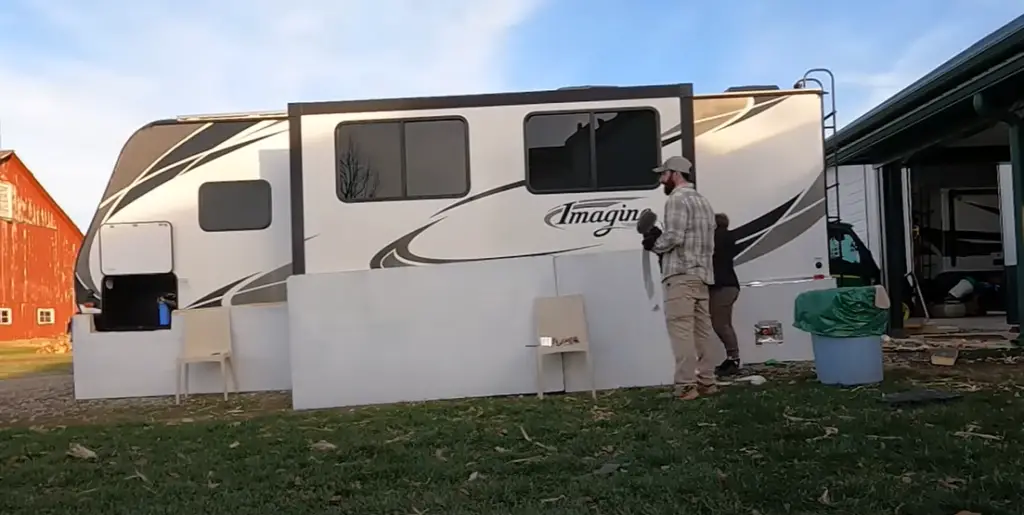
What should I do if my skirting gets damaged?
If your skirting gets damaged, the first step is to assess the extent of the damage. Small tears or holes can generally be easily repaired with seam binding tape or a patch kit. If the damage is more extensive, you may need to replace the skirting altogether. When replacing skirting, make sure to use a material that’s designed for outdoor use and one that will withstand cold weather conditions. Additionally, consider investing in an RV cover if you plan on keeping your camper parked for extended periods of time. Ultimately, it’s important to evaluate all of your options before making any decisions when it comes to repairing or replacing damaged skirting on your RV.
Can I use my RV during winter?
Yes! Many people enjoy using their RVs during the winter months. However, it’s important to ensure that your RV is properly insulated and equipped with cold weather features such as skirting, foam insulation, canvas tarps, frost free water hoses, heated mats, and reflective barriers. You should also make sure to drain any pipes or tanks before parking the RV for extended periods of time to prevent them from freezing. Taking these precautions can help ensure a safe and comfortable winter camping experience in your RV.
How often should I check my RV skirting?
It is recommended that you inspect your RV skirting at least once per season. This will help ensure that there are no tears or holes in the material which could lead to heat loss or infiltration of moisture. If there are any problems, you should repair them as soon as possible to prevent further damage. Additionally, it’s important to make sure that the skirting is securely fastened and that all of the bungee cords are in good condition.
If your skirting has reached the end of its lifespan, you may need to replace it altogether. When replacing skirting, make sure to use a material that’s designed for outdoor use and one that will withstand cold weather conditions. Finally, consider investing in an RV cover if you plan on keeping your camper parked for extended periods of time.
How effective is RV skirting?
RV skirting is very effective at keeping the heat in your RV during cold weather. It creates an insulation barrier around the bottom of the camper that traps warm air inside, preventing it from escaping outside. Additionally, RV skirting provides protection from the elements while allowing air circulation. This helps prevent mold and mildew buildup during periods of extended storage. Ultimately, RV skirting is a great way to ensure that your camper stays warm and comfortable during cold temperatures.
What is the best material for RV skirting?
The best material for RV skirting depends on your specific needs and budget. Generally, vinyl or canvas tarps are the most affordable options and provide adequate protection from the elements. However, if you need extra insulation in cold climates, then foam insulation may be a better choice. Ultimately, it’s important to consider what works best for your particular needs before making a decision.
Is RV skirting necessary?
RV skirting is not necessarily required, but it can be very beneficial in cold weather climates. Skirting helps create an insulating barrier that traps warm air inside the camper and prevents heat loss. Additionally, it provides protection from the elements while allowing air circulation which can help prevent mold and mildew buildup during periods of extended storage. Ultimately, RV skirting is a great way to ensure that your camper stays warm and comfortable during cold temperatures.
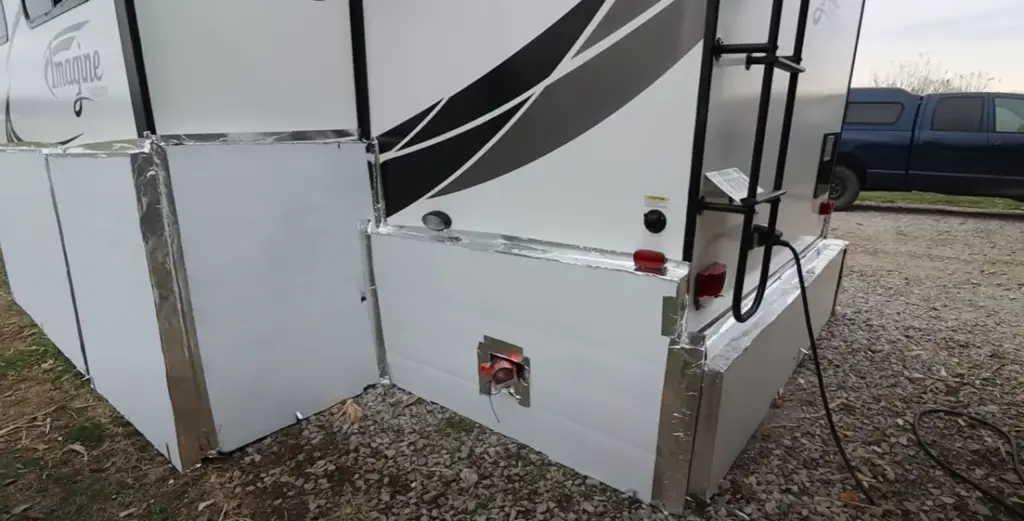
Why you shouldn’t leave your RV without skirting during winter?
Leaving an RV without skirting during the winter is not recommended as it can lead to a number of issues. Without skirting, heat will escape from the bottom of the camper and cold air will enter through any openings. This can cause the interior to become uncomfortably cold and make it difficult to keep warm. Additionally, moisture can build up which could lead to mold or mildew growth. Ultimately, investing in quality RV skirting is a great way to ensure that your camper stays comfortable and protected during cold weather months.
How to choose the best RV skirting material?
When choosing the best RV skirting material, it’s important to consider your specific needs and budget. Generally, vinyl or canvas tarps are the most affordable options and provide adequate protection from the elements. However, if you need extra insulation in cold climates, then foam insulation may be a better choice. Additionally, there are several types of materials available in various sizes to fit most RVs and provide insulation against the cold. Ultimately, it’s important to consider what works best for your particular needs before making a decision.
Where to buy RV skirting?
RV skirting can be purchased from a number of different retailers, both online and in-store. Popular online retailers include Amazon, Camping World, and RV Parts Nation. Additionally, some local hardware stores may carry RV skirting materials as well. Ultimately, the best place to purchase RV skirting will depend on your specific needs and budget.
When should I replace my RV skirting?
It is generally recommended that RV skirting should be replaced every 5-7 years depending on its condition. If you notice any tears or holes in the material, it’s important to repair them as soon as possible to prevent further damage. Additionally, if your skirting has reached the end of its lifespan, then it may be time to invest in a new kit. Ultimately, it’s important to evaluate all of your options before making any decisions when it comes to repairing or replacing damaged skirting on your RV.
Useful Video: EASY DIY RV SKIRTING | (Full-time RV)
Conclusion Paragraph
RV Skirting can be a great solution for protecting the underside of your RV from inclement weather and pests. It helps keep your RV warm in winter and cool in summer, it can provide extra insulation, and it adds a polished, finished look to your RV. Additionally, skirting makes it easier to keep up with maintenance tasks such as cleaning the underbelly or checking for signs of wear-and-tear on the exterior. With so many different options available on the market today for RV skirting, there’s sure to be an option that fits your lifestyle and budget perfectly. So, don’t wait any longer — start shopping around for the perfect RV skirting solution today!
References:
- https://koa.com/blog/rv-insulation-guide-tips-for-staying-cool-in-your-rv-this-summer/
- https://togorv.com/rv-living/rv-skirting-solutions/
- https://www.latchit.org/post/best-rv-skirting

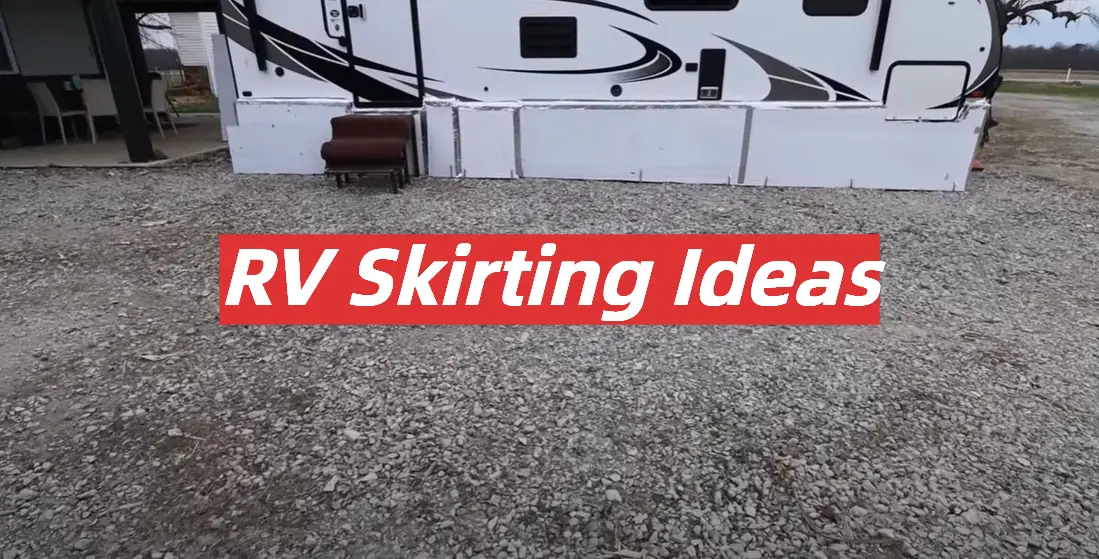
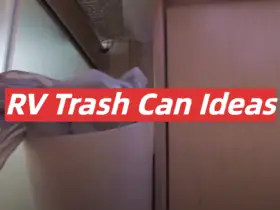


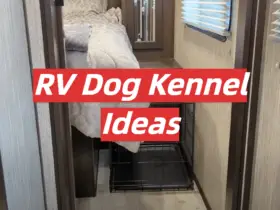
Leave a Reply